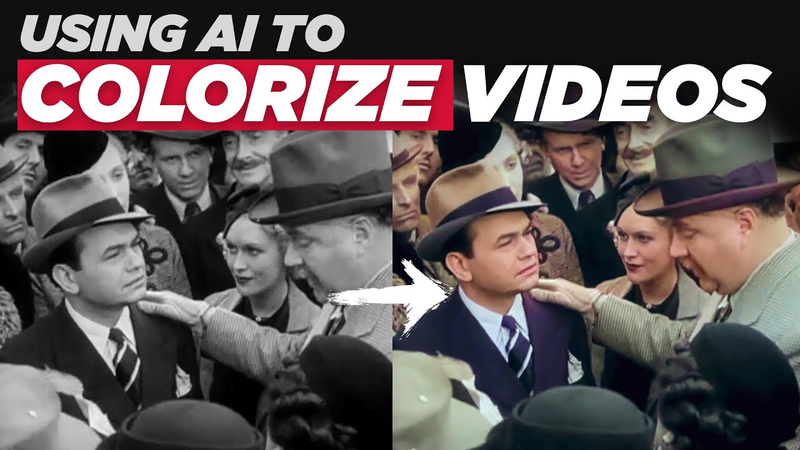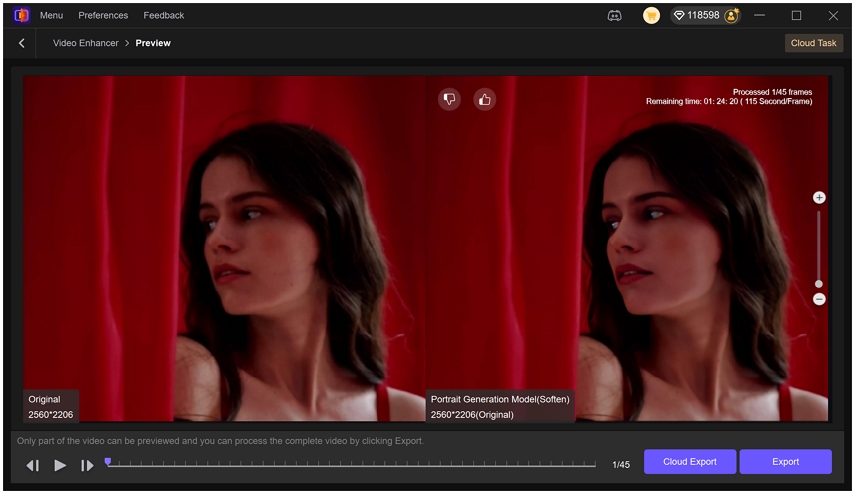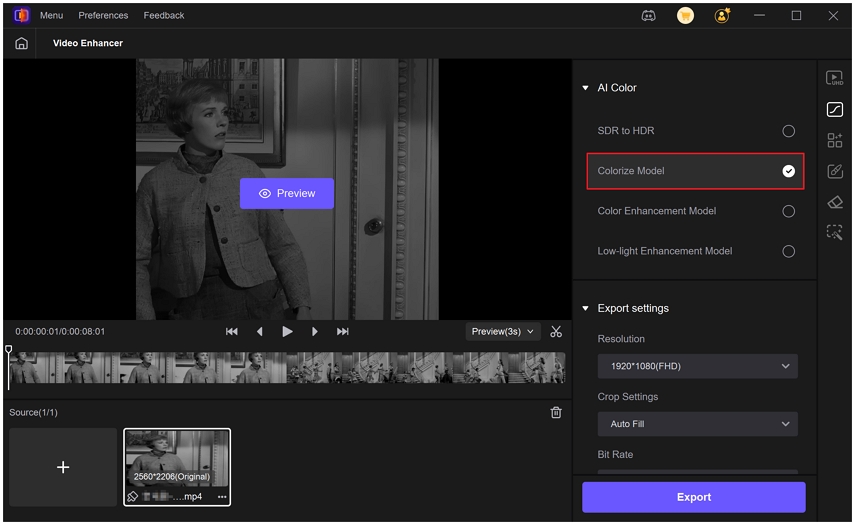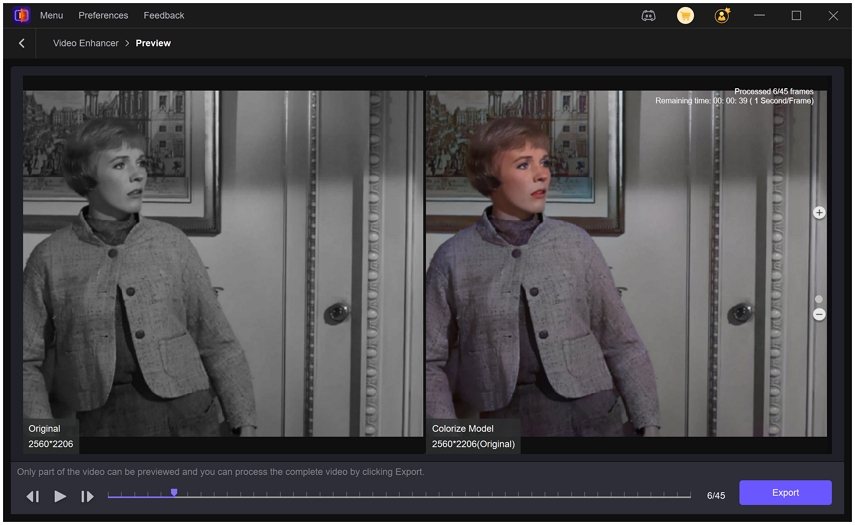How to Colorize and Restore Silent Films with AI: Step-by-Step Guide
Silent movies are a valuable segment of the history of cinema. They depict the early years of screen storytelling, but most of these films are now deteriorated. With time, film reels can develop scratches, fade, lose definition, and even crumble. Most of them are also black and white, which can render them less relatable to audiences today. Due to AI film colorization and silent film restoration technology, it is now easy to revive these classics. AI not only restores silent films but also colors silent films in realistic tones. Some of the best AI software to restore silent films and colorize them is HitPaw VikPea. Using this software, damaged footage can be repaired, quality can be enhanced, and silent movies can be colorized without any loss of quality.
Part 1: Why Can AI Restore and Colorize Silent Films
Silent film restoration has evolved a great deal over the past decades. Restoring and coloring films was a time-consuming, manual process prior to AI. Specialists used to clean frame by frame, repair scratches, and sometimes hand-paint colors. It was a good job that yielded good results but required weeks or even months for a single movie. With the advent of AI film colorization and fix tools, the process has sped up and became more accessible. Now, even a small group or an individual is able to restore silent films and colorize silent movies without costly equipment or years of learning.

Development of AI in Restoration and Colorization
AI for video repair began with basic image filters that cleaned up noise or roughened edges. Over time, creators taught AI on massive libraries of vintage movies, photos, and contemporary video. Through learning from these examples, AI understood how objects, individuals, and landscapes should appear both in black-and-white and color. This ability enables current AI technology to do AI colorization of vintage films and restore black and white silent movies with great precision. They are able to locate where the film is scratched, replace missing parts, and then insert colors that are real-world compatible.
How AI Works for Film Repair and Coloring
- Damage Detection: AI scans the video frame by frame to locate scratches, dust, frame jumps, and blurring.
- Repair Process: With reference data, AI reconstructs missing or obscured sections so the picture appears complete.
- Upscaling and Sharpening: AI has the ability to boost the resolution of classic movies, bringing them sharp enough for today's screens.
- Colorizing Silent Films: The AI makes educated estimates of realistic skin tones, clothing colors, shades of sky, and other features based on what it has already learned.
This technique makes it much easier than ever before to colorize silent films with AI, transforming dull, old black-and-white film into full-color, contemporary-look video.
Differences Between AI and Traditional Methods
Aspect
Traditional Manual Restoration
AI Restoration and Colorization
Speed
Very slow - requires editing each frame
Fast - processes entire videos in minutes or hours
Cost
High - needs skilled artists and editors
Lower - software handles most of the work
Skill Level
Requires expert training
Beginner-friendly tools available
Consistency
Quality may vary between frames
Uniform quality across all frames
Scalability
Difficult to handle large archives
Can restore large collections quickly
Advantages of AI Over Manual Methods
- Time Savings: AI processes hours of video in the time a person would spend working on a few day
- Lower Cost: No more large restoration crews; one user can do the job.
- Beginner-Friendly: You don't need to be a pro to use a silent film restoration manual for producers.
- Preserves Detail: AI can colorize historical films without sacrificing quality by meticulously matching tones and textures.
- Consistent Results: Each scene is treated equally, preventing shifts in color or changes in quality.
These advantages account for the fact that AI to colorize and restore black and white silent movies is currently utilized not only by the studios, but also by collectors, museums, and even YouTube producers.
Part 2: Best AI Tool to Colorize and Restore Silent Movies
If you're looking for a single program that can both restore silent films and colorize silent movies, HitPaw VikPea is one of the best AI tools to restore silent films available today. It combines AI-powered video repair with automatic colorization, making it useful for both beginners and professionals. HitPaw VikPea is Windows and macOS compatible, and it's used for tasks such as AI colorization of film, video upscaling from low resolution, fixing broken footage, and enhancing dark or washed-out scenes. As an option for those who want to know how to colorize silent films using AI, it has a simple user interface and easy controls.
Key Features of HitPaw VikPea
- Video Repair Models: Fix damaged or scratched silent film reels so they play smoothly. For instance, an incomplete 1920s family movie with lost frames can be restored to normal motion.
- Noise Reduction and Detail Recovery: Old black-and-white movies have heavy grain; AI minimizes it without destroying facial and object details.
- AI Colorization for Old Films: Convert black-and-white footage into natural colors. If you are looking to colorize silent movies for social media or documentaries, this tool spares weeks of labor.
- Low-Light and Exposure Fix: Light up dark scenes without overexposing them, ideal for interior or night-time silent film shoots.
- SDR to HDR Conversion: Enhance color depth and contrast so your restored silent movies appear richer on new screens.
- AI Model Suggestions: The desktop softwarecan automatically suggest the optimal repair or colorization model for your film based on its state, allowing new users to use it.
Real-World Applications: Who Needs This
1. YouTube, TikTok Creators
Brief, restored segments of silent film restoration are likely to gain huge followings online. Using HitPaw VikPea, you can colorize silent movies and upload side-by-side before-and-after videos that will go viral on social media.
2. Documentary Filmmakers
If you are creating a culture or history documentary, applying AI to restore black and white silent films makes it easier for viewers to relate to the past. Making them into color films can make older footage more interesting for contemporary viewers.
3. Collectors
Film collectors tend to keep rare clips that might be faded out or damaged. With this software, you can restore silent films in a safe manner on your own computer without shipping reels out.
4. Museums & Educators
Museums can apply AI colorization to vintage movies to create more interactive exhibits, and historians can utilize restored clips to give lessons on history more color.
Part 3: How to Colorize and Restore Silent Films with HitPaw VikPea
Below is an easy silent film colorization guide that demonstrates how to colorize silent films with AI and restore them in a step-by-step manner. Always begin with repair first then add color for optimal results.
Step 1.Visit the official HitPaw VikPea website and download the software by clicking the install button.
Step 2.Launch the software and add your video using Choose File or drag-and-drop. HitPaw VikPea supports over 30 formats, including MP4, AVI, MOV, and MKV.

Step 3.Pick an AI model for enhancement, such as General Restoration Model, HD Sharpen Model, Video Repair, AI Color, Frame Interpolation, or Stabilization.

Step 4.Click Preview to process the video. Once satisfied, click Export to save it. Use Import for batch processing.

Step 5.Re-import your enhanced video back into HitPaw VikPea. In the AI Color option, select Colorize Model to restore natural colors to black-and-white footage.

Step 6.Use the Preview feature to compare the original black-and-white video with the AI colorized version. Once you're happy with the results, click Export to save your final video.

FAQs About Colorizing and Restoring Silent Films with AI
Yes. AI algorithms for AI film colorization are trained on real-world visuals. Though not every frame is ideal, the outcome is frequently realistic enough to watch and share.
AI can restore scratches, repair broken frames, enhance resolution, and even colorize silent movies so that they appear sharper and more appealing.
Yes. It has a simple interface, so it is an ideal option for anyone seeking a silent film restoration tutorial for creators or a beginner's silent movie colorization tutorial.
Conclusion
Silent films are treasures worth saving. With AI colorization for old films and repair tools like HitPaw VikPea, it's now easier than ever to restore silent films and colorize silent movies in one workflow. Whether you're a creator, historian, or film lover, learning how to colorize silent movies with AI can help preserve history for future audiences. For anyone who needs to revive black and white silent films without compromising quality, HitPaw VikPea is one of the premier AI tools used to restore silent films. It provides simple controls, robust AI models, and results that revive old cinema to its former glory.
Leave a Comment
Create your review for HitPaw articles














